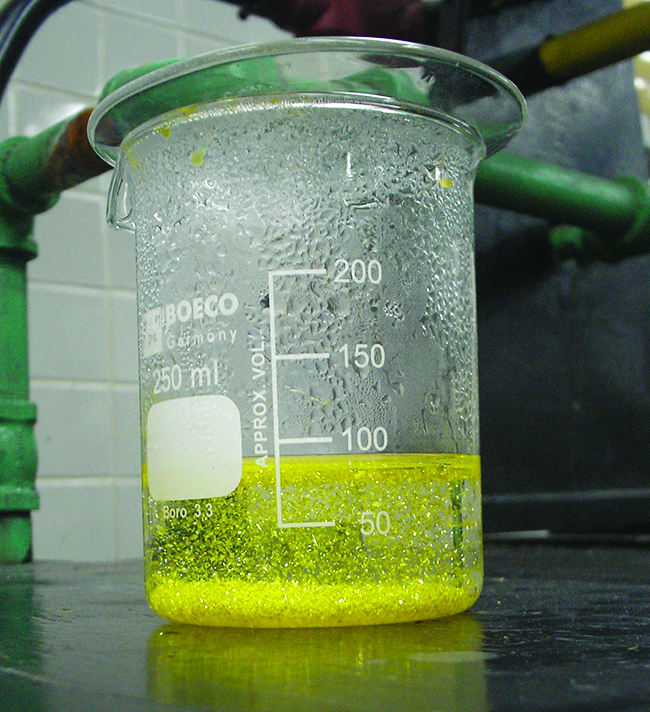| << Chapter < Page | Chapter >> Page > |
A vivid example of precipitation is observed when solutions of potassium iodide and lead nitrate are mixed, resulting in the formation of solid lead iodide:
This observation is consistent with the solubility guidelines: The only insoluble compound among all those involved is lead iodide, one of the exceptions to the general solubility of iodide salts.
The net ionic equation representing this reaction is:
Lead iodide is a bright yellow solid that was formerly used as an artist’s pigment known as iodine yellow ( [link] ). The properties of pure PbI 2 crystals make them useful for fabrication of X-ray and gamma ray detectors.

The solubility guidelines in [link] may be used to predict whether a precipitation reaction will occur when solutions of soluble ionic compounds are mixed together. One merely needs to identify all the ions present in the solution and then consider if possible cation/anion pairing could result in an insoluble compound. For example, mixing solutions of silver nitrate and sodium fluoride will yield a solution containing Ag + , Na + , and F − ions. Aside from the two ionic compounds originally present in the solutions, AgNO 3 and NaF, two additional ionic compounds may be derived from this collection of ions: NaNO 3 and AgF. The solubility guidelines indicate all nitrate salts are soluble but that AgF is one of the exceptions to the general solubility of fluoride salts. A precipitation reaction, therefore, is predicted to occur, as described by the following equations:
(a) potassium sulfate and barium nitrate
(b) lithium chloride and silver acetate
(c) lead nitrate and ammonium carbonate
(b) The two possible products for this combination are LiC 2 H 3 O 2 and AgCl. The solubility guidelines indicate AgCl is insoluble, and so a precipitation reaction is expected. The net ionic equation for this reaction, derived in the manner detailed in the previous module, is
(c) The two possible products for this combination are PbCO 3 and NH 4 NO 3 . The solubility guidelines indicate PbCO 3 is insoluble, and so a precipitation reaction is expected. The net ionic equation for this reaction, derived in the manner detailed in the previous module, is
sodium sulfate, BaSO 4

Notification Switch
Would you like to follow the 'Chemistry' conversation and receive update notifications?